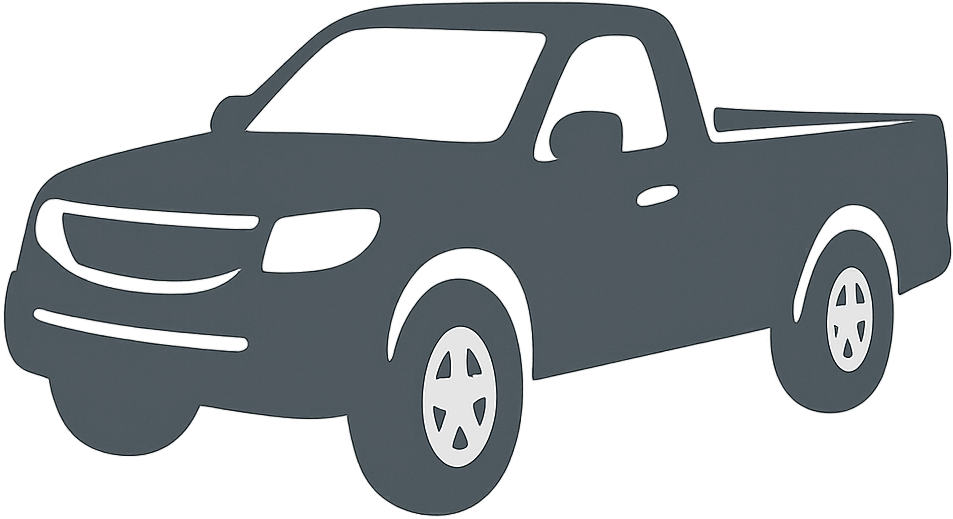 1975 Ford F-Series F-100 VI SuperCab Dimensions, Size & Specs
1975 Ford F-Series F-100 VI SuperCab Dimensions, Size & Specs
Measurements of the 1975 Ford F-Series F-100 VI SuperCab, engineered for optimal performance and comfort
| Dimensions | |
|---|---|
| Length: | 5362 mm211.1 in17.6 ft |
| Trunk Capacity: | 1727 liter61.0 cu ft |
| Weight Specifications | |
| Maximal permitted Weight: | 2563-2585 kg5650-5699 lbs |
| Tire Specifications | |
| Rims Size: | 15-inch rims:
|
| Tire Sizes: |
|
The 1975-1979 Ford F-Series F-100 VI SuperCab represents the sixth generation of this iconic pickup truck line, designed to offer both utility and comfort for drivers who need a capable vehicle for work or leisure. This generation features a substantial length of 5362 mm (211.1 inches), providing ample space and a commanding road presence typical of mid-1970s full-size pickups. The vehicle’s maximum weight ranges between 2563 and 2585 kg (5650 to 5700 lbs), reflecting its robust build and capacity for heavy loads.
One of the practical features of the F-100 VI SuperCab is its generous luggage capacity of 1727 liters (approximately 60.9 cubic feet), allowing for efficient transport of tools, equipment, or cargo. The truck is outfitted with 7J x 15 rims paired with tire sizes of 215/75 R15 or 225/75 R15, ensuring a good balance of ride comfort and rugged road handling.
As a pickup truck produced throughout the mid to late 1970s, the F-100 VI SuperCab combines classic design elements with functional features that meet the demands of that era’s drivers. Its SuperCab variant offers additional interior space behind the front seats, making it more versatile than standard single-cab models. Overall, the 1975-1979 Ford F-Series F-100 VI SuperCab is a durable and spacious pickup that holds a significant place in Ford’s storied truck lineage.
Discover the standout features that make the 1975 Ford F-Series F-100 VI SuperCab a leader in its class
Have a question? Please check our knowledgebase first.
The 1975 Ford F-Series F-100 VI SuperCab measures 5362 mm (211.1 inches) in length. The truck's height and width, while not specified here, are consistent with full-size pickups of its era. This length provides ample space for both the cabin and the cargo bed, essential for a working pickup vehicle.
The Ford F-100 VI SuperCab from 1975 has a maximum weight ranging between 2563 kg and 2585 kg (approximately 5653 lbs to 5700 lbs). This weight includes the vehicle’s curb weight plus the maximum allowable load, impacting fuel efficiency, handling, and braking capability while also reflecting the truck's robust build suited for heavy-duty tasks.
This pickup truck boasts a luggage or cargo capacity of 1727 liters (about 60.9 cubic feet). This volume primarily refers to the bed space available for carrying tools, equipment, or other materials. The SuperCab design adds more interior space which makes it versatile for both passengers and cargo, addressing varied work and recreational needs.
This generation typically rides on 7J x 15 rims, paired with tire sizes of 215/75 R15 and 225/75 R15. These measurements reflect the truck’s balance between durability and performance, offering good ground clearance and stability needed for different terrains and load conditions in a pickup truck.
With a length of 5362 mm (211.1 inches), the 1975 Ford F-100 VI SuperCab is longer than many modern passenger vehicles and may be a tight fit in smaller or compact garages. Standard single-car garage lengths typically range around 5500 mm (180-220 inches), so while it can fit into many standard garages, extra care is needed to ensure sufficient clearance space on all sides, particularly in width and maneuvering space.
Compared to its predecessor, the 1973-1974 Ford F-100, this 1975 VI SuperCab maintained similar overall dimensions with incremental adjustments in design focusing on increased interior space and cargo capability. The slight changes in length and weight improved the truck’s utility without significantly altering its fundamental size, aiming for enhanced comfort and function within a familiar footprint.
When compared to contemporary pickups like the Chevrolet C/K series or Dodge D-Series from the mid-1970s, the Ford F-100 VI SuperCab’s length of 5362 mm and weight around 2560 kg places it squarely in the full-size pickup segment. Often, these trucks shared similar size ranges, but Ford’s SuperCab option gave it a practical edge by providing extra cabin room without greatly increasing overall length, balancing comfort and usability against competitors.
The exact height and width are not specified here, though similar models from this generation generally stood around 1900 mm (74.8 inches) high and had widths near 2040 mm (80.3 inches). These dimensions provide a commanding presence on the road but can present challenges in tight city driving or narrow parking spaces. The truck’s size emphasizes rugged utility but requires drivers to be mindful in confined areas.
The 1975 F-100 VI SuperCab typically offered a range of inline-six and V8 engines, including the popular 300ci inline-six and 302ci or 360ci V8s, providing decent power outputs suited for both work and daily driving. While specific engine details depend on the trim, the truck was engineered for reliable torque and towing capability, making it a practical choice for various hauling and utility tasks during that era.
The 1975 Ford F-100 VI SuperCab was notable at the time for its expanded cabin space compared to regular cab trucks, providing more room for passengers with its SuperCab design. However, by today’s standards, the interior is more basic with fewer comfort amenities. Modern pickups feature advanced infotainment, ergonomic seating, and greater noise insulation, while the 1975 truck focuses more on rugged utility and straightforward functionality.
